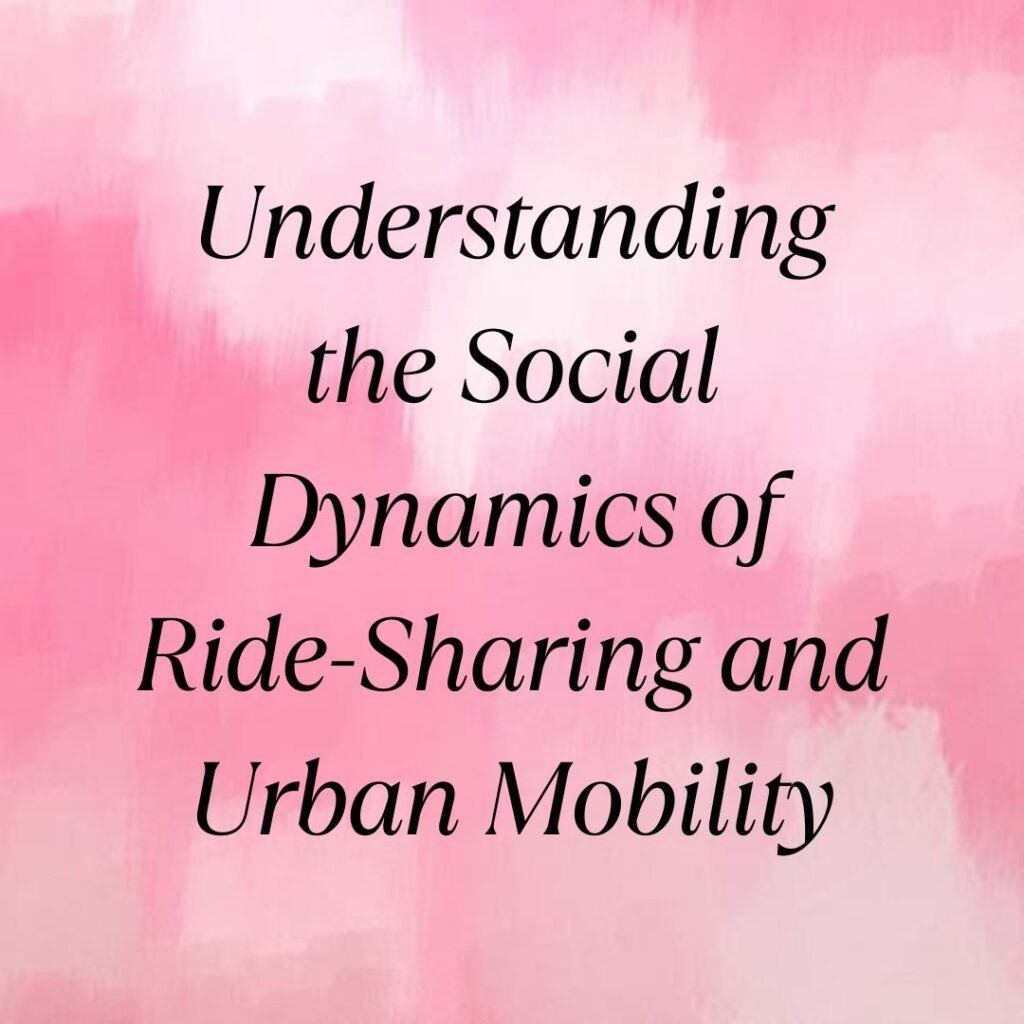In the bustling urban landscapes of today, ride-sharing has revolutionized the way people move around cities. Beyond mere transportation, it has become a significant social phenomenon, reshaping not just commuting habits but also social interactions, economic dynamics, and even environmental impacts. Let’s delve into the intricacies of ride-sharing and urban mobility to uncover its profound effects on modern society.
Evolution of Urban Mobility: From Traditional Taxis to Ride-Sharing Giants
The rise of ride-sharing platforms like Uber, Lyft, and local equivalents across the globe marks a paradigm shift from traditional taxi services. These platforms leverage technology to connect passengers with drivers, offering convenience through mobile apps, cashless transactions, and often competitive pricing. This evolution has democratized access to transportation, making it more accessible and flexible than ever before.
Social Interactions in Transit: From Strangers to Connections
One of the most intriguing aspects of ride-sharing is its ability to facilitate unique social interactions. Passengers and drivers, often strangers from diverse backgrounds, find themselves sharing intimate spaces for short periods. This environment can foster conversations ranging from local insights and cultural exchanges to personal stories and shared interests.
For example, imagine a Lyft ride in New York City where a passenger from Europe learns about local cuisine from a driver who is also a part-time chef. Such interactions not only enhance the ride experience but also contribute to a sense of community and shared humanity in urban settings.
Economic Empowerment and Job Creation
Beyond its social aspects, ride-sharing has emerged as a significant economic force. It provides flexible income opportunities for drivers, many of whom operate part-time or full-time to supplement their earnings. This gig economy model has empowered individuals to monetize their vehicles and driving skills, offering financial stability amidst evolving job markets.
Moreover, ride-sharing platforms often implement incentive programs and bonuses to attract and retain drivers, further boosting local economies. In cities where traditional job markets may be limited, these opportunities become crucial for livelihoods.
Environmental Considerations: Reducing Congestion and Emissions
In an era increasingly concerned with sustainability, ride-sharing presents itself as a double-edged sword. On one hand, by optimizing routes and reducing the number of vehicles on the road, it can alleviate urban congestion. This not only saves time for commuters but also reduces overall traffic-related stress and improves air quality in densely populated areas.
Conversely, the environmental impact of ride-sharing vehicles themselves remains a topic of debate. While some argue that pooling services like UberPool and Lyft Line reduce individual emissions per passenger, others point out that increased vehicle miles traveled (VMT) and the transition from public transit may offset these gains. Therefore, striking a balance between convenience and environmental stewardship remains a challenge.
Technological Advancements and Future Trends
Looking forward, ride-sharing continues to evolve with advancements in technology and shifts in consumer behavior. Autonomous vehicles (AVs) represent a promising frontier, potentially reducing costs and enhancing safety. Companies like Waymo and Tesla are at the forefront of AV development, aiming to integrate these technologies into urban mobility solutions.
Moreover, the integration of ride-sharing with public transit networks—known as Mobility as a Service (MaaS)—promises seamless multimodal journeys. Imagine booking a ride-share to connect with a subway or bus line, all through a single app interface. Such innovations not only enhance convenience but also promote sustainable urban mobility solutions.
Conclusion: Ride-Sharing as a Catalyst for Social Change
In conclusion, ride-sharing has transcended its role as a mere transportation service to become a catalyst for social change in urban environments. It fosters diverse interactions, supports economic opportunities, and influences environmental policies. As cities worldwide grapple with issues of congestion, pollution, and accessibility, ride-sharing platforms stand at the forefront of innovation, driving towards a more connected and sustainable future.
As we navigate these dynamics, understanding the social, economic, and environmental impacts of ride-sharing is crucial. It not only informs policy decisions and technological advancements but also enriches our appreciation for how mobility shapes our daily lives in the 21st century urban landscape.
In essence, ride-sharing isn’t just about getting from point A to point B—it’s about the journey, the connections made along the way, and the transformative impact on cities and their inhabitants.
This comprehensive exploration highlights how ride-sharing is more than a mode of transport; it’s a reflection of societal shifts towards connectivity, accessibility, and sustainability in our increasingly urbanized world.







